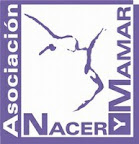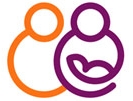Efecto de la ingesta de alimentos durante el trabajo de parto sobre los resultados obstétricos: ensayo controlado aleatorio. Effect of food intake during labour on obstetric outcome: randomised controlled trial
ARTICULO ORIGINAL.CONCLUSIONES: El consumo de una dieta ligera durante el trabajo no influyó en los resultados obstétricos o neonatales en los participantes, ni aumentar la incidencia de vómitos. Mujeres a quienes se permiten comer tienen las misma duración del parto y tasas de partos operatorios que las que a las que solamente se les permitió solo agua.
ENLACE A TEXTO COMPLETO EN BMJ>>
Reproducimos ABSTRACT
Objective To investigate the effect of feeding during labour on obstetric and neonatal outcomes.
Design Prospective randomised controlled trial.
Setting Birth centre in London teaching hospital.
Participants 2426 nulliparous, non-diabetic women at term, with a singleton cephalic presenting fetus and in labour with a cervical dilatation of less than 6 cm.
Intervention Consumption of a light diet or water during labour.
Main outcome measures The primary outcome measure was spontaneous vaginal delivery rate. Other outcomes measured included duration of labour, need for augmentation of labour, instrumental and caesarean delivery rates, incidence of vomiting, and neonatal outcome.
Results The spontaneous vaginal delivery rate was the same in both groups (44%; relative risk 0.99, 95% confidence interval 0.90 to 1.08). No clinically important differences were found in the duration of labour (geometric mean: eating, 597 min v water, 612 min; ratio of geometric means 0.98, 95% confidence interval 0.93 to 1.03), the caesarean delivery rate (30% v 30%; relative risk 0.99, 0.87 to 1.12), or the incidence of vomiting (35% v 34%; relative risk 1.05, 0.9 to 1.2). Neonatal outcomes were also similar.
Conclusions Consumption of a light diet during labour did not influence obstetric or neonatal outcomes in participants, nor did it increase the incidence of vomiting. Women who are allowed to eat in labour have similar lengths of labour and operative delivery rates to those allowed water only.© O et al 2009
This is an open-access article distributed under the terms of the Creative Commons Attribution Non-commercial License, which permits unrestricted use, distribution, and reproduction in any medium, provided the original work is properly cited.
http://creativecommons.org/licenses/by-nc/2.0/







 Anterior: Duración de la lactancia y la incidencia de infarto de miocardio en la edad adulta. Duration of lactation and incidence of myocardial infarction in middle to late adulthood
Anterior: Duración de la lactancia y la incidencia de infarto de miocardio en la edad adulta. Duration of lactation and incidence of myocardial infarction in middle to late adulthood

 Web MatronasUbeda by
Web MatronasUbeda by 